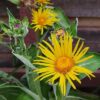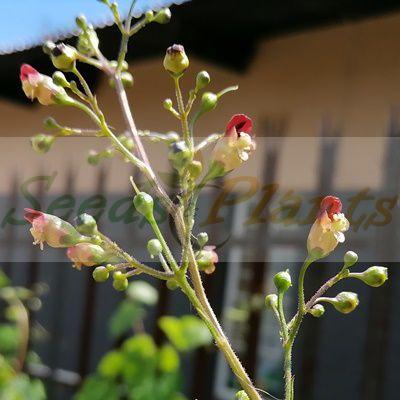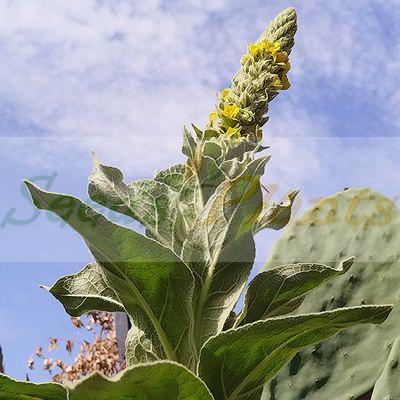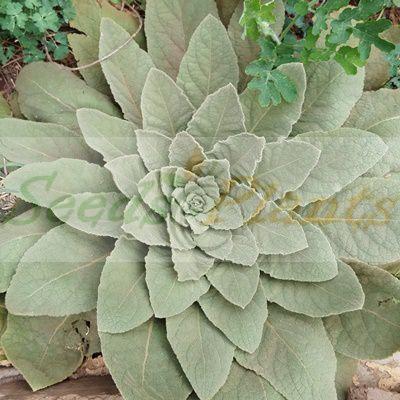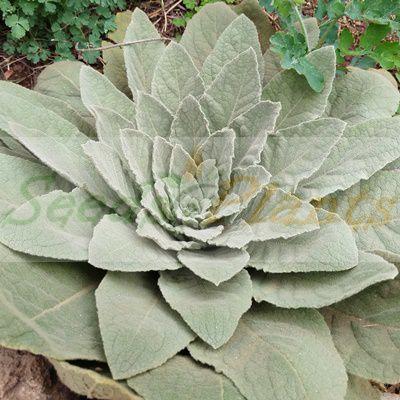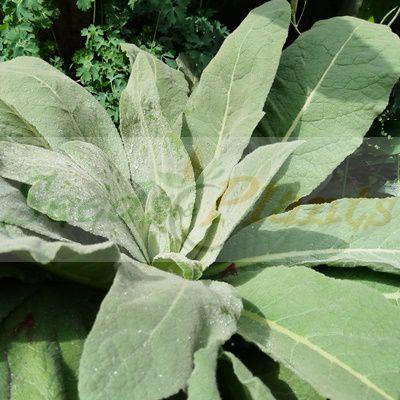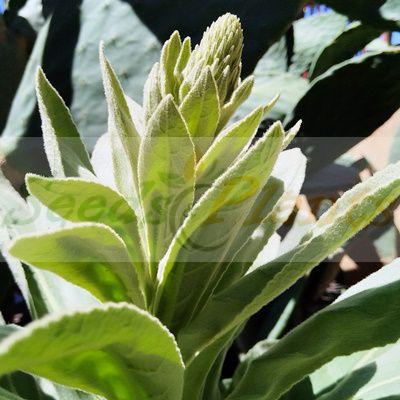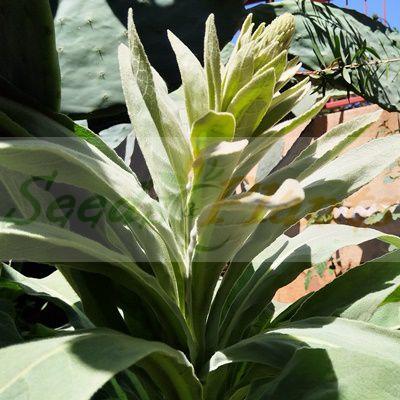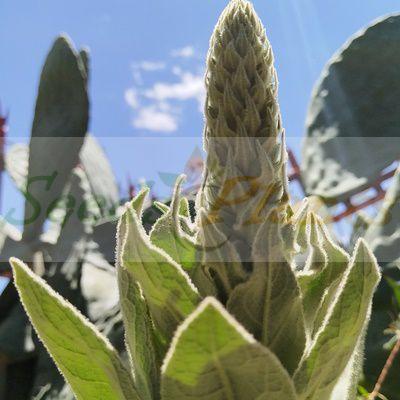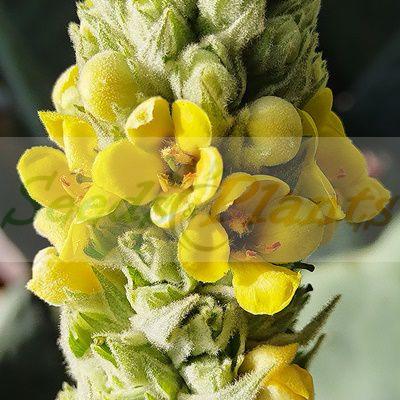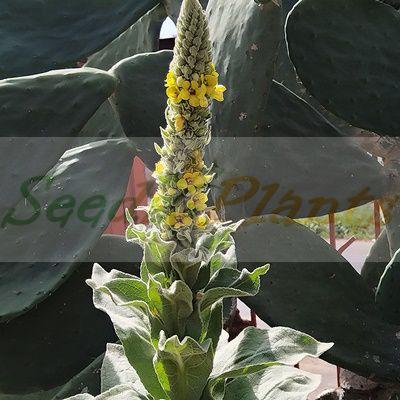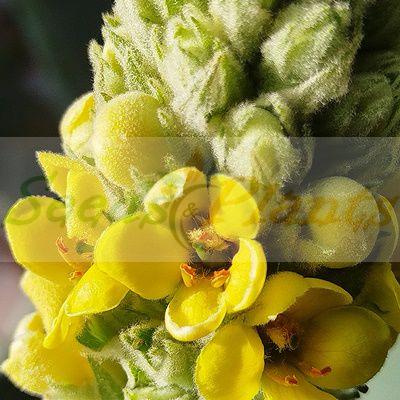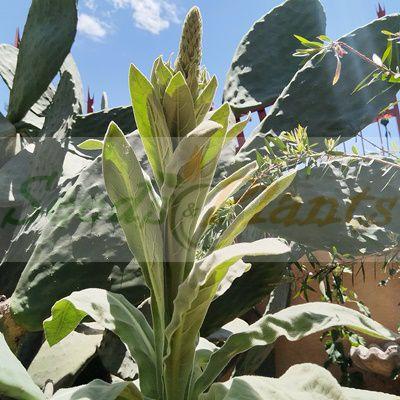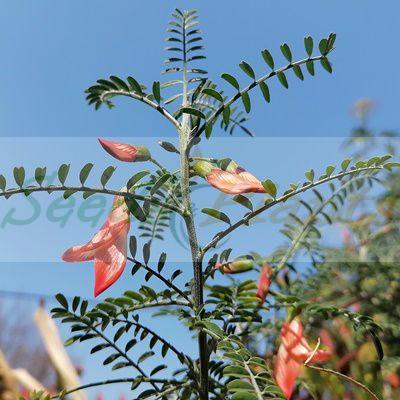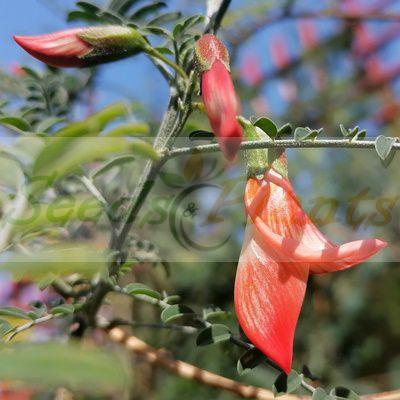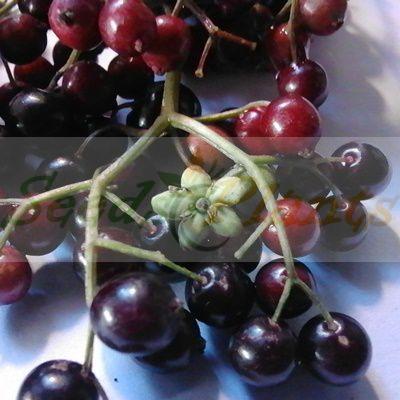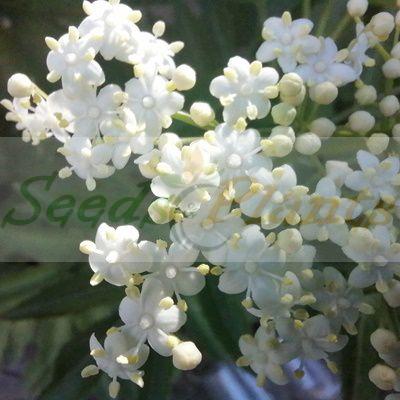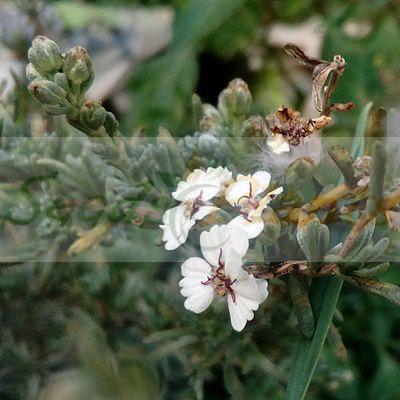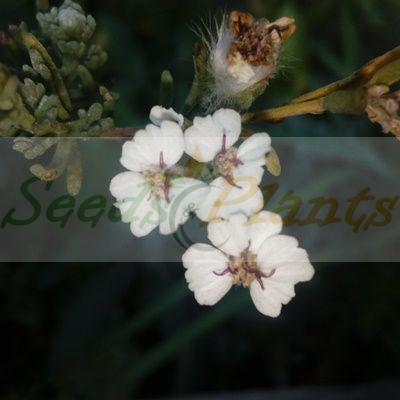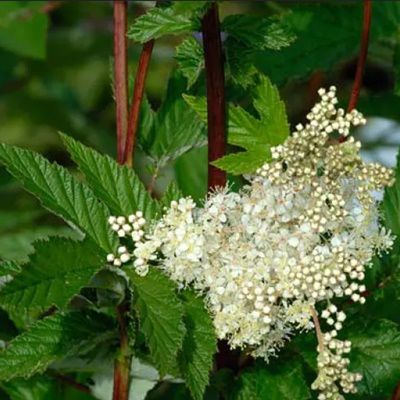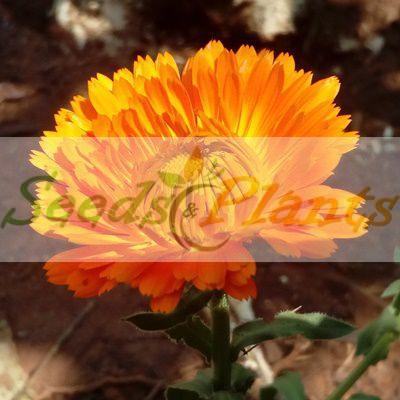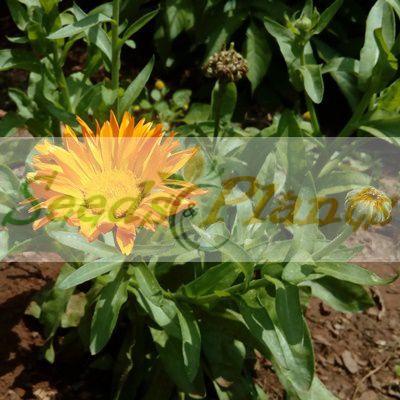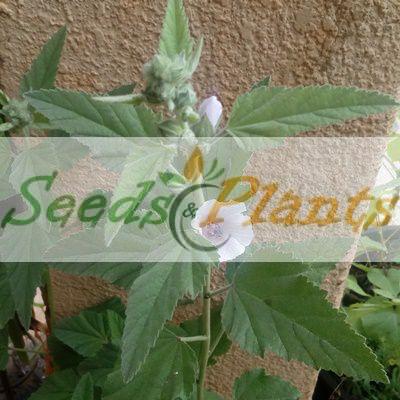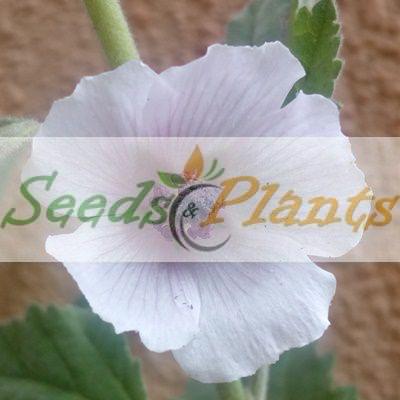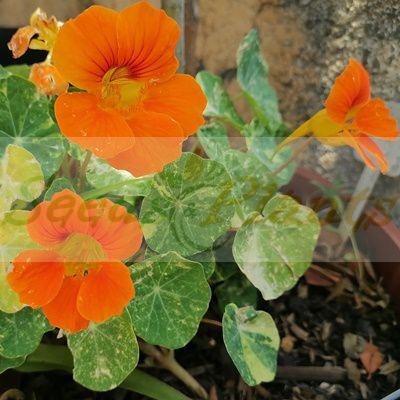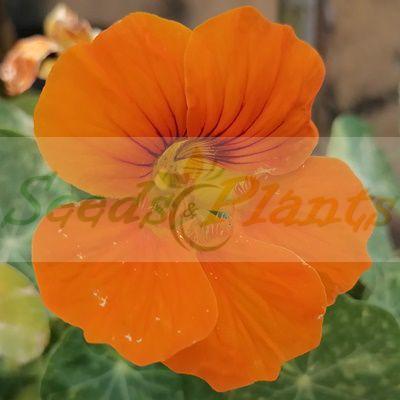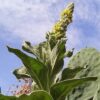🌿 Herbal Quick Facts
Medicinal Info
- 🌍 Origin / Region: Central Asia, Europe, North Africa, Western Asia
- 🌿 Medicinal Part: Flower, Leaf, Root
- 🍵 Herbal Preparation: Extract / Tincture, Infused Oil, Infusion / Tea, Poultice, Smoking
- ⚕️ Healing System: American Traditional Medicine, European Traditional Medicine
Growth Traits
- 🌱 Life Cycle: Biennial
- 🌾 Plant Type: Herbaceous Biennial
- 🦋 Pollinator Method: Attracts Bees, Attracts Butterflies, Attracts Hoverflies
- 🪴 Growth Habit: Upright
- 🌸 Flower Color: Yellow
Growing Requirements
- 🌞 Sun Exposure: Full Sun
- 💧 Water Needs: Avoid Overwatering, Low Water
- ☀️ Growing Conditions: Drought Tolerant, Frost Tolerant, Heat Tolerant
- 🟤 Soil Preference: Poor Soil Tolerant, Tolerant of most soils, Well-Drained
Mullein – 100 Seeds
(Verbascum thapsus)
R30.00
Mullein is a well known medicinal plant, that also has great ornamental value in the garden
Common Names: Woolly mullein, the great mullein, common mullein, Aaron se Staf (Afr) and Aaron’s Rod (Eng).
Seed Type: Organic – Harvested from our own plants.
Indoor Sowing: Not Recommended.
Direct Sowing: Late Winter, Early Spring and Autumn.
In stock
🌿 Herbal Quick Facts
Medicinal Info
- 🌍 Origin / Region: Central Asia, Europe, North Africa, Western Asia
- 🌿 Medicinal Part: Flower, Leaf, Root
- 🍵 Herbal Preparation: Extract / Tincture, Infused Oil, Infusion / Tea, Poultice, Smoking
- ⚕️ Healing System: American Traditional Medicine, European Traditional Medicine
Growth Traits
- 🌱 Life Cycle: Biennial
- 🌾 Plant Type: Herbaceous Biennial
- 🦋 Pollinator Method: Attracts Bees, Attracts Butterflies, Attracts Hoverflies
- 🪴 Growth Habit: Upright
- 🌸 Flower Color: Yellow
Growing Requirements
- 🌞 Sun Exposure: Full Sun
- 💧 Water Needs: Avoid Overwatering, Low Water
- ☀️ Growing Conditions: Drought Tolerant, Frost Tolerant, Heat Tolerant
- 🟤 Soil Preference: Poor Soil Tolerant, Tolerant of most soils, Well-Drained
Mullein generally requires winter dormancy before it can flower. Verbascum thapsus, is also known as woolly mullein, the great mullein,common mullein,Aaron se Staf (Afr) or Aaron’s Rod (Eng), is a species of mullein native to Europe, northern Africa, and Asia.
It is a hairy biennial plant that can grow to 2 m tall or more and has a deep tap root. Its small, yellow flowers are densely grouped on a tall stem, which grows from a large rosette of leaves. It grows in a wide variety of habitats, but prefers well-lit, disturbed soils, where it can appear soon after the ground receives light.
The plant produces a rosette of leaves in its first year of growth. The leaves are large, up to 50 cm long. The second-year plants normally produce a single unbranched stem, usually 1–2 m tall. The tall, pole-like stems end in a dense spike of flowers that can occupy up to half the stem length.
Mullein Medicinal Benefits
Mullein tea is a traditional treatment for respiratory problems, such as chest colds, bronchitis and asthma. Both the leaves and flowers contain mucilage, which is soothing to irritated membranes, and saponins, which make coughs more productive.
- Herb for respiratory complaints
- Bitter, cooling – soothes and lubricates tissues and promotes healing
- Diuretic, analgesic, expectorant, antiseptic
- Internally used in the treatment of Coughs, whooping cough, bronchitis, laryngitis, tonsillitis, tracheitis, asthma, influenza, respiratory catarrh, tuberculosis, urinary tract infection, insomnia, nervous tension
- Externally used in the treatment of Ear ache, sores, wounds, boils, rheumatic pain, hemorrhoids and chilblain
Growing Mullein
Indoor Sowing: Not Recommended.
Direct Sowing: Late Winter, Early Spring and Autumn.
- Sow Mullein seeds direct in late winter, early spring or autumn.
- Surface sow the seeds thinly into prepared soil.
- Just cover the seeds with a fine layer of soil or vermiculite.
- Keep moist.
- Germination takes place at 15-18°C.
- Prefers full sun in a moist well-drained soil.
- Offer mulch protection during winter.
- Fertilize if desired, but this may cause leaf growth at the expense of flower growth. Will self-seed freely.
- In the first year plants are low-growing rosettes of felt-like leaves. The whorl of leaves emerge from the root crown at the soil surface.
- The bluish gray-green, oblong to lanceolate leaves are densely covered in hairs.
- In the second year plants produce a flower stalk 5-10 feet tall. They bloom a few at a time throughout the summer, maturing on the stalk from the bottom to the top in successive spirals.
- Each individual flower opens before dawn and closes by mid-afternoon. The flowers attract a wide variety of insects – bees, flies, butterflies and other insects, but only short- and long-tongued bees are effective in cross‑pollination.
- Flowers are also autogamous, so self-pollination occurs at the end of the day if the flowers were not cross‑pollinated.
- After flowering the entire plant dies – there is no vegetative reproduction.
Does this plant have medicinal uses?
Traditionally, Mullein has a history of use in various healing systems, including American Traditional Medicine and European Traditional Medicine. Seeds are sold for cultivation purposes only.
Disclaimer
Medicinal Information:
All medicinal information on this website is for educational and informational purposes only and may not be construed as medical advice. The information is not intended to replace medical advice or treatment offered by healthcare professionals.
Seeds, Plants, Plant Cuttings, Geophytes and Dried Herbs:
In some countries and provinces, certain plants are deemed as invasive and are not allowed to be planted at all, whilst some plants are allowed to be grown only in certain areas or provinces. The onus is on you as the buyer to familiarize yourself with the regulations pertaining to your location, before purchasing any of our seeds, plants, plant cuttings, geophytes or dried herbs. We will not be held liable, should you purchase any seeds, plants, plant cuttings, geophytes or dried herbs. from us which are prohibited in your country or province.

